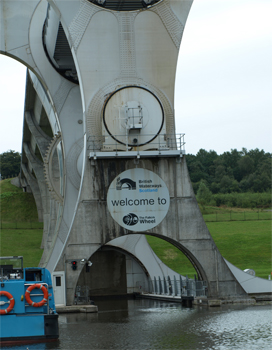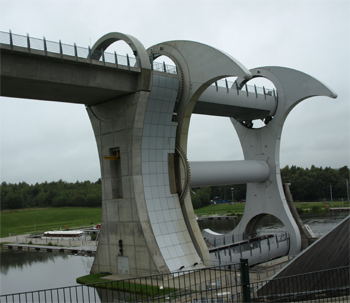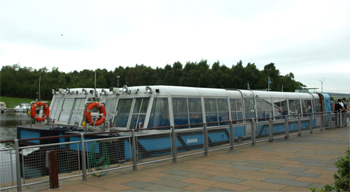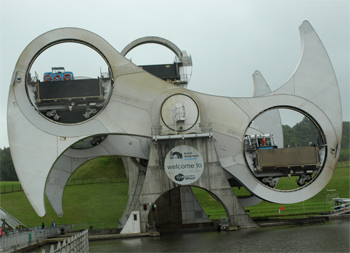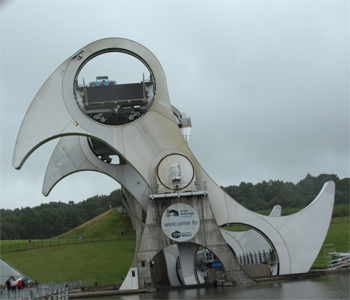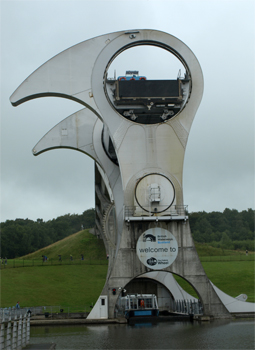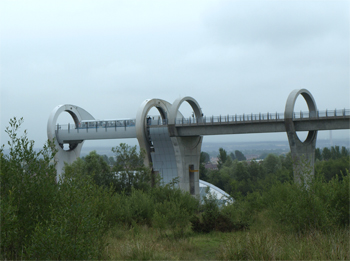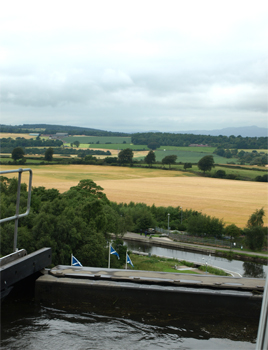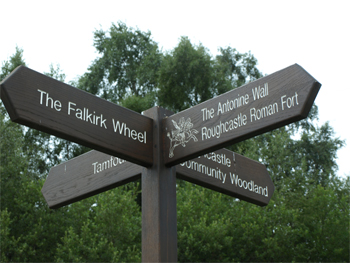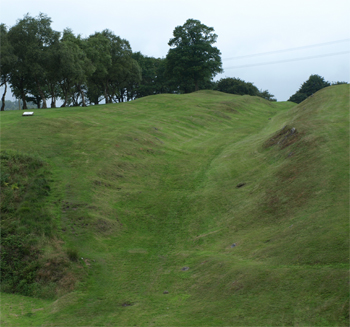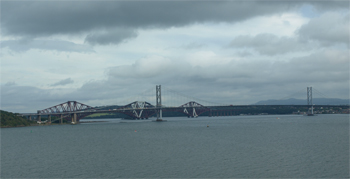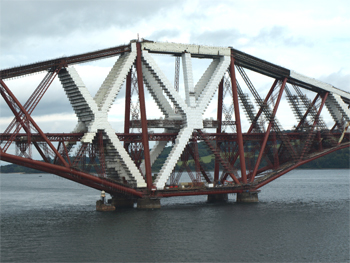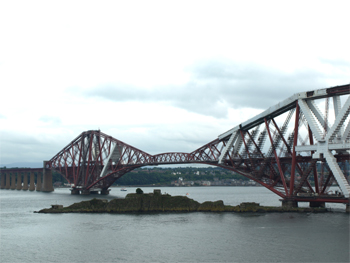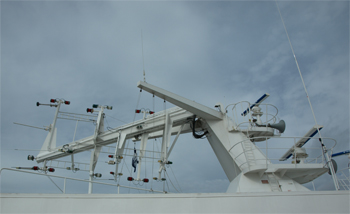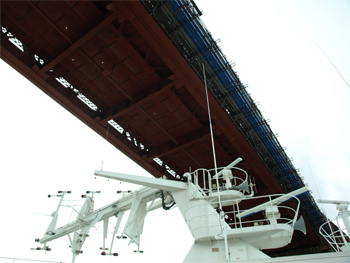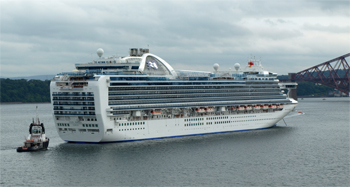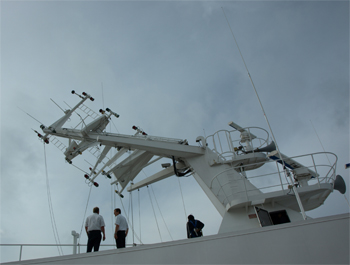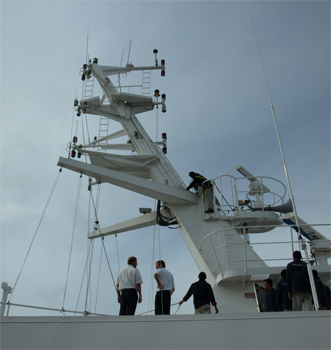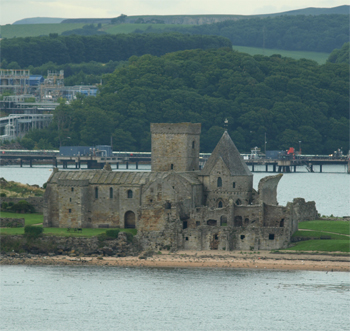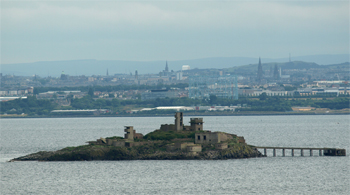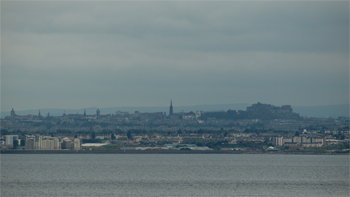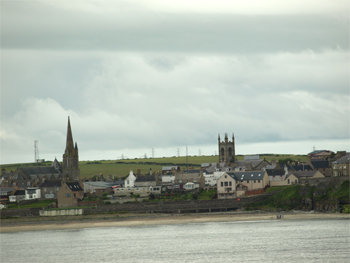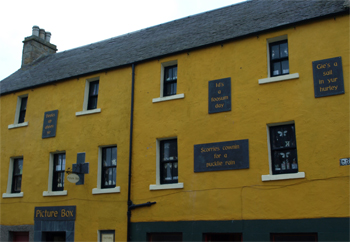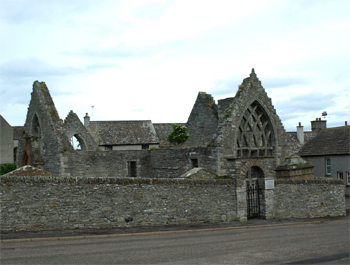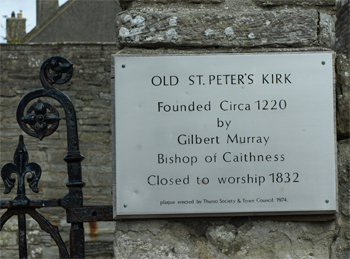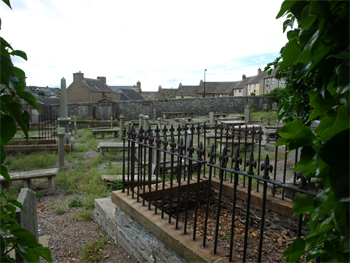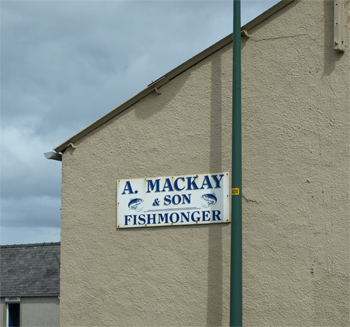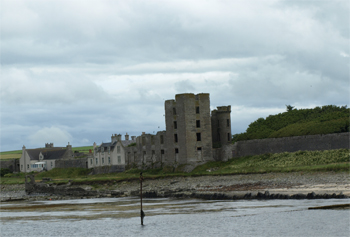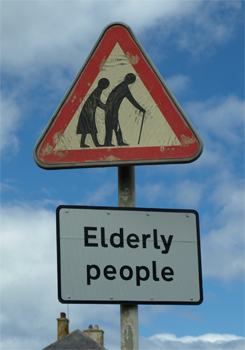Mon., 7/26/10 - Rosyth/Edinburgh on the Firth of Forth, Scotland
This morning we docked at the industrial and Royal naval yard at Rosyth on the north side of the River Forth and west of Edinburgh which is on the south side. We were booked on an excursion to the Falkirk Wheel and the adjacent Rough Castle Roman fort occupied around 140 AD and the Antonine Wall built by the Romans as a boundary of the farthest north that the Roman Empire expanded in the British Isles.
The Falkirk Wheel is an ingenious mechanical device, which connects the Union Canal with the Forth and Clyde Canal, which is 24 meters (79 ft.) higher. It was built to replace several deteriorated locks and to re-establish canal usage as a pleasure mode of transport. It was opened in 2002, by Queen Elizabeth II. We boarded a canal boat, moved into one of the "gondolas," waited for the displacement of water to equal the weight of the second gondola 180° above us and then the cogs rotated us up to an aqueduct that connected with the Forth Canal. It took 4 1/2 minutes to rotate the 180° and used only as much energy as it would take to "boil water in 8 electric tea kettles." Isn't physics and Archimedes Principle impressive? After a brief "sail" through the Rough Castle tunnel, we paused in a small lagoon and then turned around and reentered the tunnel, aqueduct, and wheel for the return to the gift shop. (Link for further information about the Falkirk Wheel.)
Falkirk Wheel
|
Falkirk Wheel |
Canal boats for the Falkirk Wheel |
Falkirk Wheel - gondolas rotating
|
Falkirk Wheel - gondolas rotating |
Falkirk Wheel - gondolas rotating - almost there
|
Falkirk Wheel - back to earth
|
Falkirk Wheel from a distance |
View from the top of the Falkirk Wheel
|
Our bus guide then led us on a mile and a half walk to view the Antonine Wall and the Rough Castle Roman Fort. |
|
A series of lilias - pits which contained sharpened timbers (stakes) pointing to the north to discourage the Picts from attacking the fort. |
The Roman legions built a ditch and a ten-foot high turf wall in honor of Antoninus Pius, the ruler of this northern area and to rival Hadrian's Wall, which was farther south in Britain. Not much of the wall still exists but previous excavation and aerial observation have identified both the wall and the fort. |
Antonine Wall - on left
|
We sailed back under the Forth Railway Bridge , which, until 1917, was the longest cantilever rail bridge in the world. The old bridge is so low, that at high tide (when we sailed) the mast and instruments on the bridge had to be lowered for us to fit underneath. We had a good look at an old monastery on one rock in the Firth (firth means estuary) and an old fort on another rock island.
|
Forth Railway Bridge
|
Forth Railway Bridge - White material is actually protective stuff that they use during maintenance
|
Forth Railway Bridge |
Mast down |
Clearing the bridge
|
|
A large Princess Cruise ship had to anchor on the North Sea side and use tenders to get their 3,000 passengers ashore. This is one reason we like our smaller HAL ships (806 guests on this Prinsendam).
|
Restoring the mast |
Restoring the mast
|
A Scottish castle
|
WWII defenses with Edinburgh in the distance |
Edinburgh from the ship - Edinburgh Castle on the right and Tolbooth Church in the center |
Inchkeith lighthouse near the entrance to the Firth of Forth - More WWII defenses in the foreground
|
Dinner tonight was with a couple (Gary and Lin) from Lewes, Delaware with whom I had a lot in common - I spent several summer weeks in Lewes with my pelican sailboat. The other couple was from the Netherlands - he is a politician.
We went to the evening show tonight and listened to some good soothing classical guitar by Robin Hill. We had a full day today.
Tues., 7/27/10 - Scrabster/Thurso, Scotland
This morning we anchored in Thurso Bay between the port of Scrabster and the small town of Thurso – the northern-most mainland town in the UK. The Orkney Islands lie just to the north. We had to use the tenders to depart the ship and then rode a free shuttle bus into Thurso.
Approaching Thurso, Scotland
|
Thurso |
We walked around the little town and spent some time in the Caithness Heritage Museum. This northeastern part of Scotland was originally the home of the Picts and then the Vikings arrived - some raided and some settled - and then the Christian church asserted its influence here. Of interest are stone markers with Pict symbols (which have not been interpreted) and later Christian crosses in insignia. The Picts made many tools and implements out of stone. As many as 400 curious inscribed stone balls (3 inch diameter) have been found in the area.
|
|
Wall with Scots sayings |
Pict stone in the Caithness Heritage Museum
|
13th century St. Peter's church is a roofless stone ruin
|
|
St. Peter's Church cemetery |
Fishing has been a livelihood in this area for centuries
|
Thurso Castle |
We especially liked this sign on a corner near a retirement home!
|
We walked around the old town with its narrow, crooked streets and part of the newer town laid out in a square grid. We decided to walk back to the ferry dock and our ship tenders. Along the way we enjoyed the neat flower gardens and close cropped grass lawns. Thurso is a neat, clean little town and it is happily encouraging tourism with brochures, free shuttle buses, and even a nice campground right along the bay.
|
|
The evening entertainment tonight was a very good classical soprano, Fiona Jessica Wilson. She sang several operatic arias and some Broadway musical songs. She has a very appealing voice.
| Return to Top | Return to Itinerary | Return to Dreamcatcher Home Page |
